1917 New Testament Bible Named to Venor A. Fox - Battery "C" 60th Field Artillery


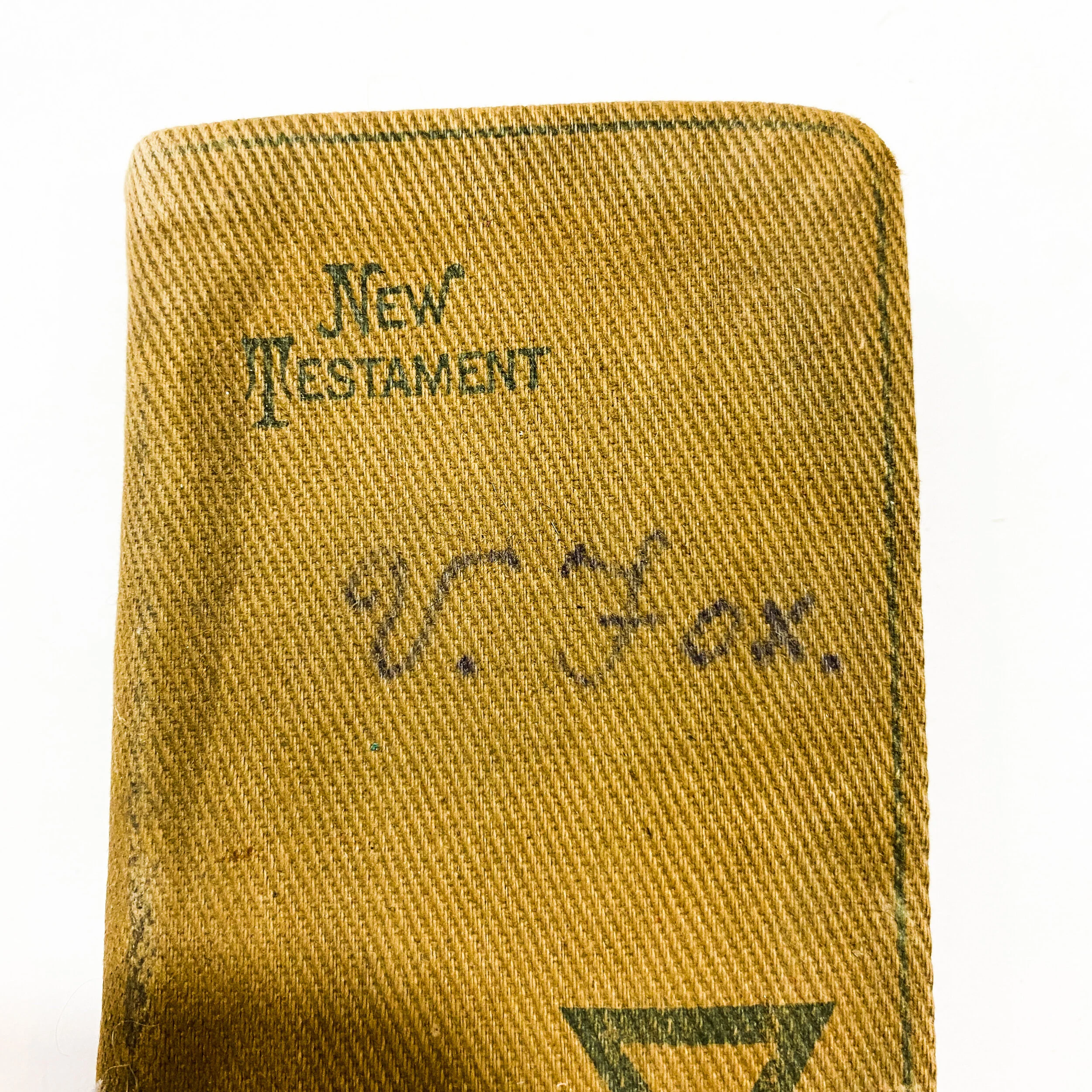
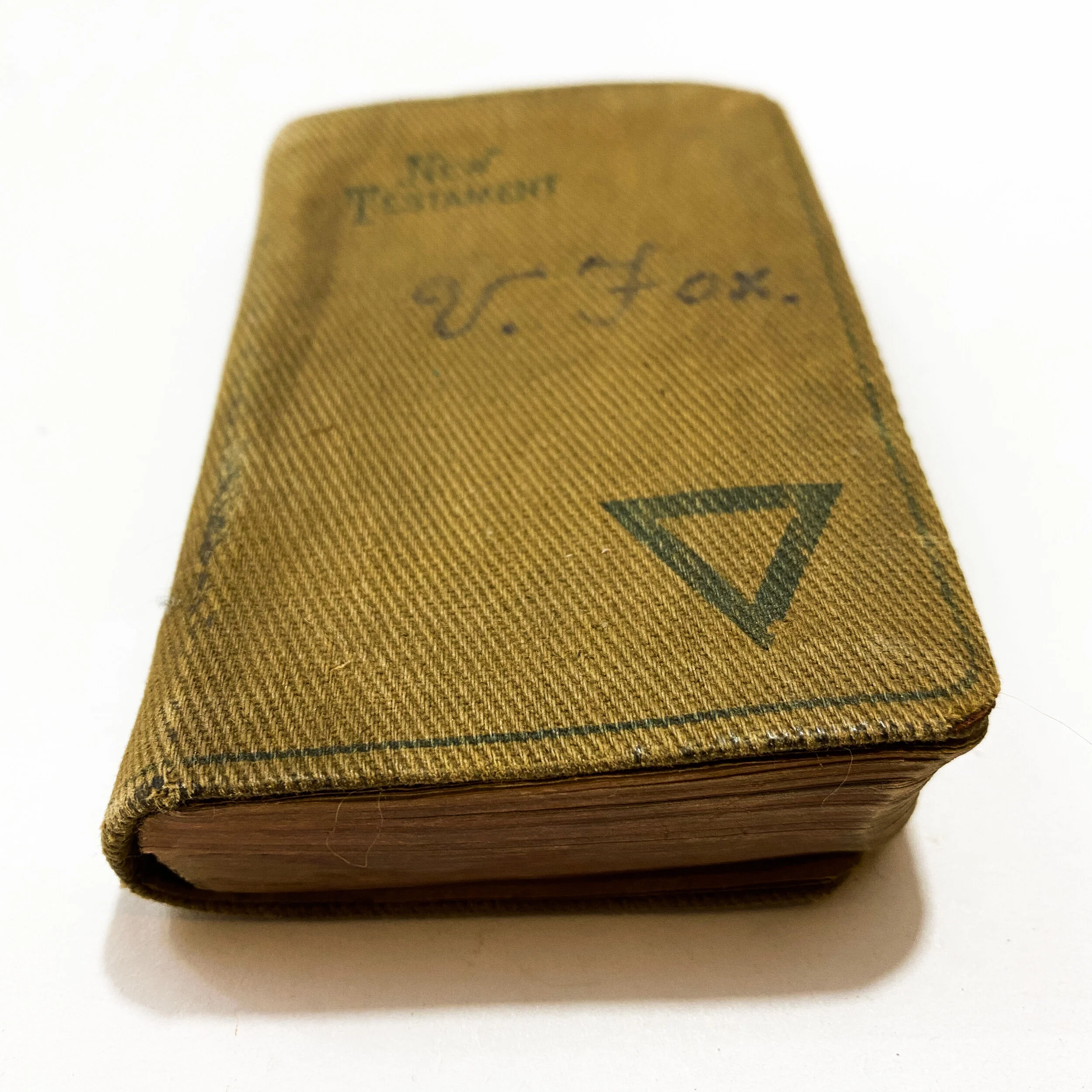
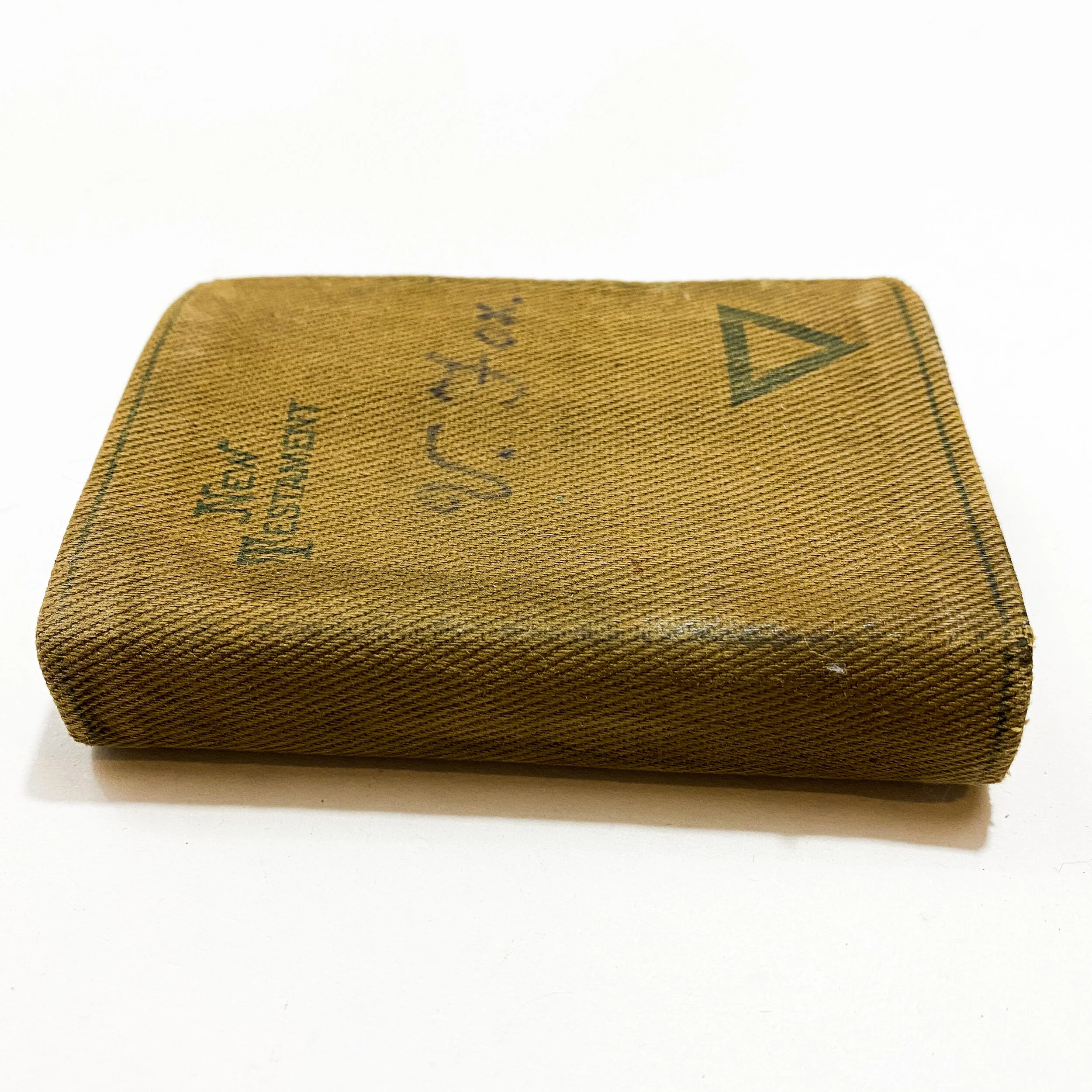
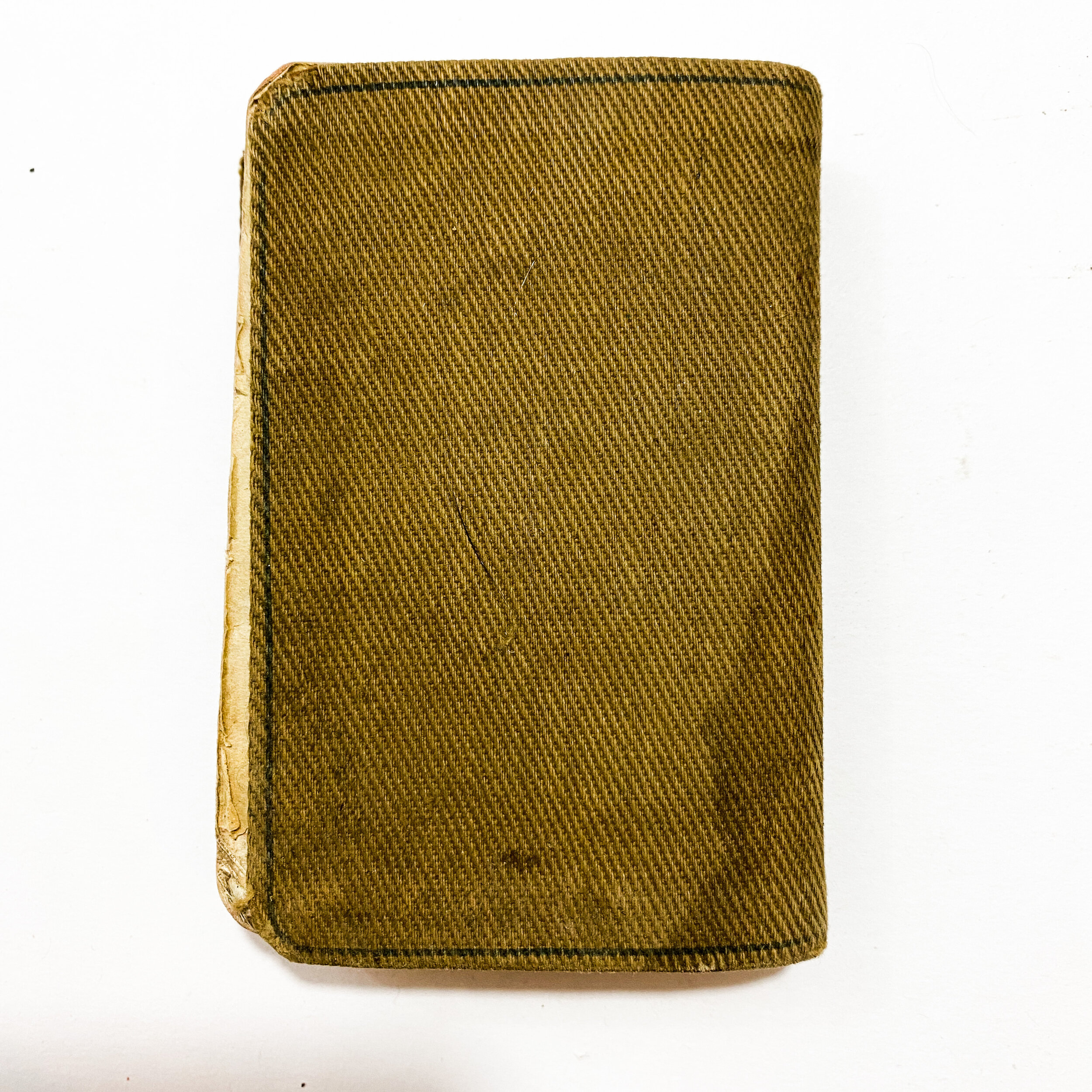
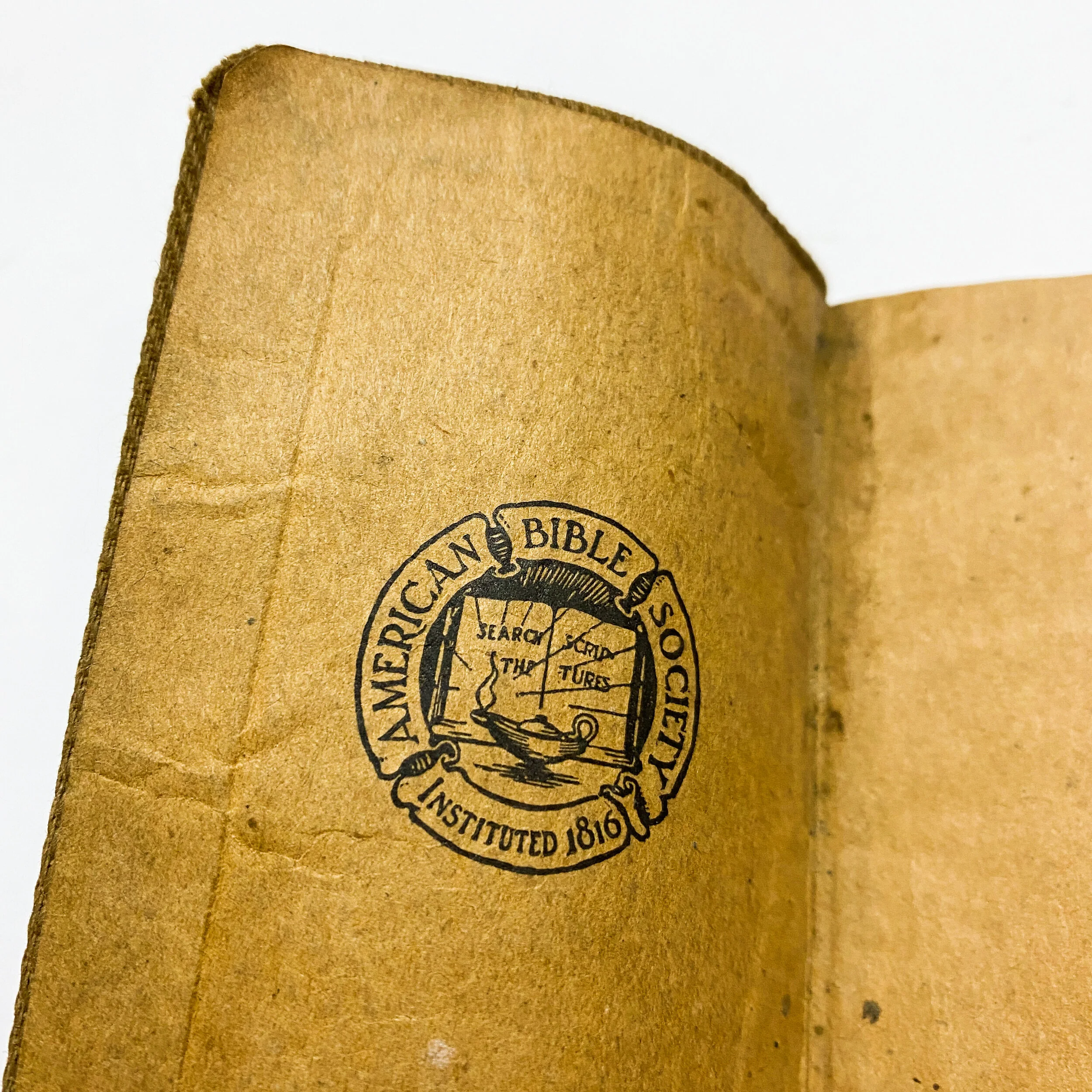



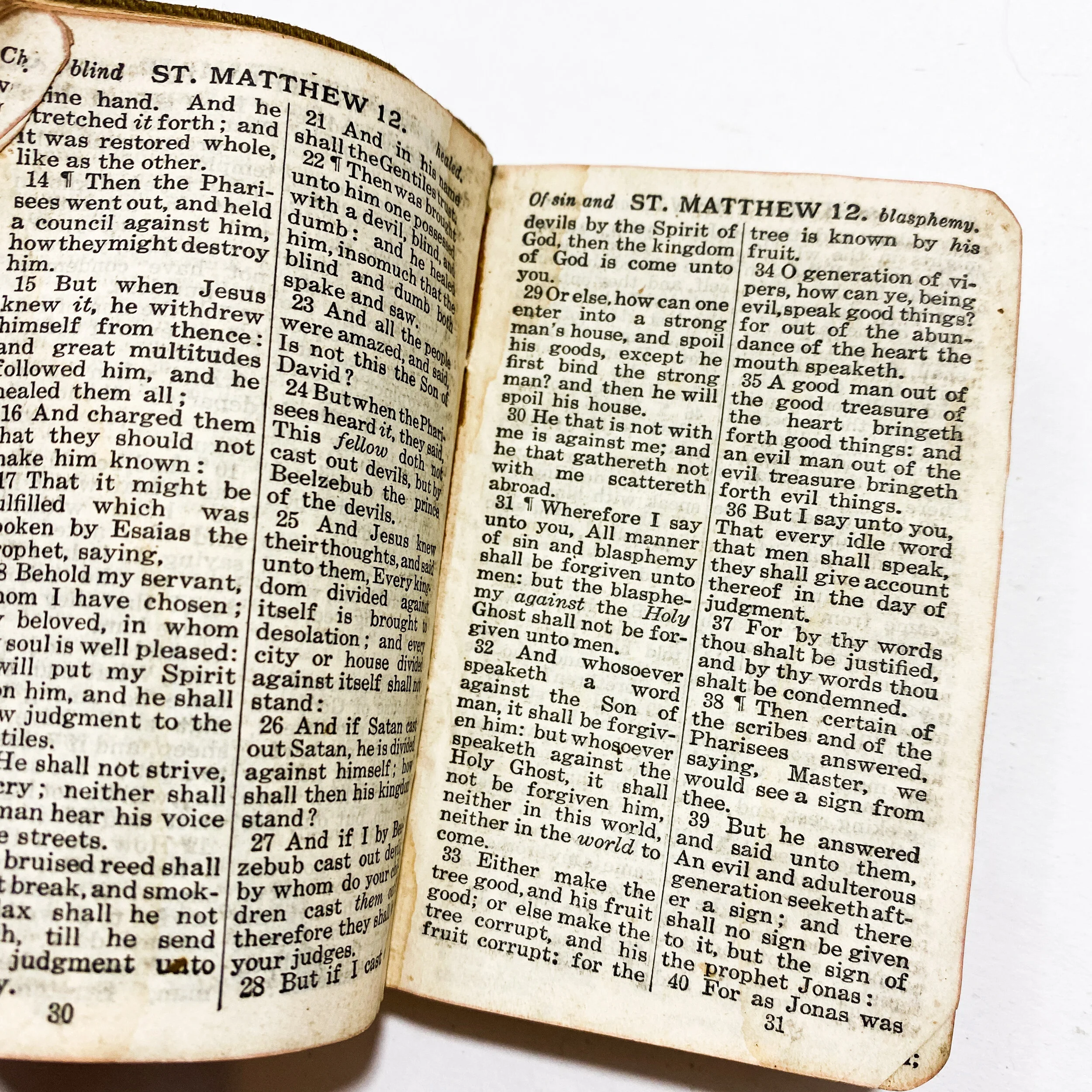


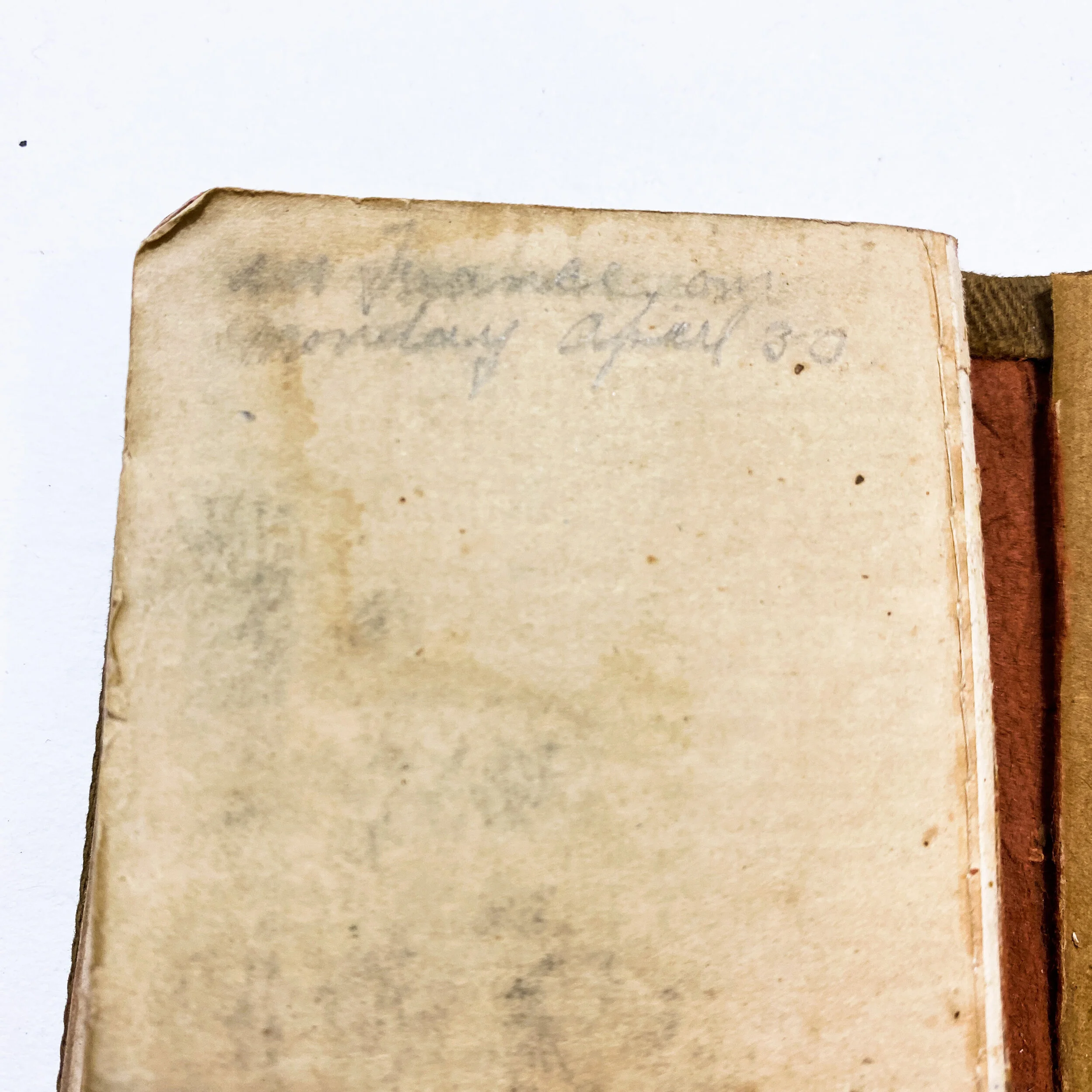

1917 New Testament Bible Named to Venor A. Fox - Battery "C" 60th Field Artillery
This is a rare WWI Era New Testament Bible is dated 1917. Printed by the American Bible Society this heavy tan cloth Bible was carried by Venor A. Fox who served with Battery “C" of the 60th Artillery during World War I. The inside of the New Testament Bible is inscribed by Fox with all of his information. Bibles like this were carried by soldier and were sometimes used as a separate identification tool if soldiers were killed in action.The binding of the BibleI is in relatively good condition and the pages remain fully intact with some minor spots of staining on certain pages. The back section of the Bible is inscribed with the address of Venor A. Fox of St.Louis., MO. What makes this Bible even more unique is the faded inscription of “In France on Monday April 30th”. This bible was carried by Fox during combat.
All the artillery of the army, corps and divisions, including trench mortars, will be echeloned in rear of the position of resistance in such a manner that: Field Artillery and heavy howitzers can execute counter-preparation fire 1500 to 2000 meters in front of the outpost position. Heavy guns and heavy howitzers can effectively deliver counterbattery fire. High power heavy artillery can execute fire of interdiction on the enemy's communications and important centers. In order to fulfill missions, which cannot be executed from emplacements in rear of the positions of resistance some guns may be placed in front of this position, but every precaution must be taken to affect the rapid withdrawal or the destruction of these guns in case the enemy launches a general attack. The fire to be directed on portions of the interior of our positions (between strong points, in front of the position of resistance, etc.) and the fire to be employed in connection with previously prepared counter-attacks will be minutely regulated. Antitank guns will be disposed in depth so as to furnish the maximum protection for the position of resistance. The crews must be provided with adequate infantry protection.
Battle Participation of the 60th Artillery:
(1) St. Mihicl offensive, France.
1st Battalion, 12-l 4 September, 1918.
2d Battalion, 14 September.
3d Battalion, 14 September.
(2) Meuse-Argonne offensive, France.
1st, 2d and 3d Battalions, 26 September-11 November, 1918.
Recorded Combat of Battery “C”:
At the time Battery C was likely in the edge of the woods known as Foret Domaniale du Point de l’Aune which is about a half-mile west of the town of Montblainville. They would have been firing in a north by north-westerly direction into the German positions emplaced in the Meuse-Argonne forest area. The several towns near Montblainville which included Baulny, Charpentry, Very and Cheppy, which encompassed an area of about 10-miles was packed full of the other American Coast Artillery regiments. During the night it looked as though it was daylight from so many muzzle flashes of American heavy artillery guns being fired. One can only imagine what that sounded like.
But back in the area where Battery C was firing from, the Germans had this position under heavy shell fire, and a German shell came in and exploded and caught PFC Chapman, wounding him. Almost instantly two other men of Battery C, Pvt. Albert L. O’Connell and Sgt. Lawrence Wininger saw what had happened to PFC Chapman. O’Connell and Wininger found a litter, ran out to where PFC Chapman was laying, exposed and wounded, and without any regards to their own safety, scooped Chapman up, put him on the litter and together began to return to safety with Chapman on the litter. It was then that another German shell, likely fired at the time the two were rushing out to render aid to a fellow soldier, hit the ground nearly underneath the litter. The explosion killed PFC Chapman outright and severely wounded both O’Connell and Wininger. Both O’Connell and Wininger survived their wounds and both were given the Distinguished Service Cross for extraordinary heroism in action.
This was not the only death in combat for the 60th Artillery, it was only the first installment of the price they would have to pay. Nine days later on October 13th Cpl. Vincent G. Cooley of Battery D was Killed in Action and the very next day on October 14th, PFC Clarence V. Madary of the Medical Detachment was Killed in Action; on October 21, PFC Earl McKenzie of Battery C, died of disease; and PFC Lily G. Carver of Battery A was Killed in Action; and on November 1, Corporal William Bartoli of Battery C was also Killed in Action. Death on the battlefield took no regard of rank because the price was even paid by the commanding officer of the 60th Artillery, Colonel Wallace.